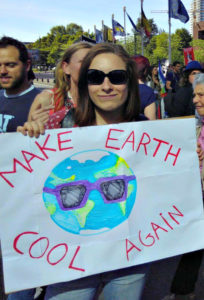European Green Deal: An Ineffective Plan to Address the Climate Crisis
Despite all criticism, the existence of the European Green Deal itself is a reason for hope. The promise of prioritizing the issue of climate change in all EU actions and policies might be useful to hold the Commission accountable for dangerous decisions in the future. Ideas like the one to urge companies making 'green claims' to substantiate their environmental impacts, and the announcement to tackle methane emissions, have the potential to trigger real change.
Proposal relies too heavily on gas and carbon markets

On 11 December, just a few days after taking office, the new EU Commission President Ursula von der Leyen presented the European Green Deal, an overview of measures that would lead the EU to a “carbon-neutral” economy by 2050.
Food & Water Europe has taken a close look at the many promises in the proposal, and the role that EU foresees in this deal for gas.
An adequate answer to climate strikers and millions taking the streets?
EU Commission President von der Leyen presented the European Green Deal (EGD) as a “man on the moon” moment to make the EU a global leader in the energy transition. It should be seen as an “answer” to the activists taking to the streets demanding climate action. There are several areas where the plan simply comes up short.
Gas secures its place in the “Green” Deal
One of the most disappointing aspects is the role of gas. Despite increasing scientific evidence about the climate impacts of fracked gas and the urgency to stop fossil fuels altogether, the EGD still sees a role for gas in Europe’s future.
In the proposal, the Commission talks about “decarbonized” gas, which might be everything from hydrogen to biogas, or simply fossil gas where emissions are supposedly abated by carbon capture and storage (CCS). This approach continues to directly support fossil fuels, right in the heart of an allegedly green plan towards a zero-emission Europe.
The heavy reliance on techno-fixes such as the utilization or storage of carbon also gives a clear signal to the fossil fuel industry: Keep polluting, we will somehow take care of that carbon – and have Europeans foot the bill.
Hydrogen is also mentioned in the EGD, but it is not as green as it seems: Almost the entirety of hydrogen generated today is based on fossil fuels. If fossil sources are not explicitly excluded from any useful hydrogen strategy, emissions will continue to rise.
A good deal for green-only financing?
The plan does include commitments to dedicate EU funds to climate action. At the same time, there is no guarantee that the EU will stop handing out money to dirty projects. Not only is there a big risk that financing for allegedly green solutions ends up in the pockets of big oil and gas, but also is direct money for continued fossil fuel use not excluded within the EGD so far.
The assurance that the EGD “will facilitate the phasing out of fossil fuels, in particular those that are most polluting,” sounds especially hollow, given that one of the most emblematic fossil dinosaur-supporting regulations, the TEN-E regulation, is still being defended by the new Commission, and no signs point to an acceleration of a much-needed process to renew this legislation.
Good news for polluting industries?
The European Green Deal might even contain some really good news for the biggest polluters. First of all, there is no trace of any commitment to make EU politics fossil free as demanded by a number of NGOs. If nothing changes, the fossil fuel lobby will continue sitting at the negotiating table for years to come.
Secondly, instead of scrapping the European Emission Trading System (ETS), the European Green Deal suggests – once again – to improve this failed mechanism. For over a decade, the ETS has enabled the biggest polluters to gain dozens of billions of windfall profits, while attempts to reform the program have gone nowhere. The EGD recommends more adjustments to the program, and to even expand the trading system.
Moreover, the EGD confirms its dangerously cozy relationship with big polluters in a section about energy-intensive industries, where it congratulates an EU High Level Group made up largely of industry representatives for the industry’s supposed commitment to change. A true “Green New Deal” would work to set clear goals for a just transition of these industries.
A shimmer of hope?
Despite its shortcomings, the existence of the European Green Deal itself is a reason for hope. The promise of prioritizing the issue of climate change in all EU actions and policies would be useful for holding the Commission accountable for dangerous decisions in the future. Ideas like the one to urge companies making ‘green claims’ to substantiate their environmental impacts, and the announcement to tackle methane emissions, have the potential to trigger real change.
As usual, the problem lies in the nitty gritty details, and civil society will need to take a very close look at the EU’s next steps to make sure this deal is worth its ‘green’ name.


